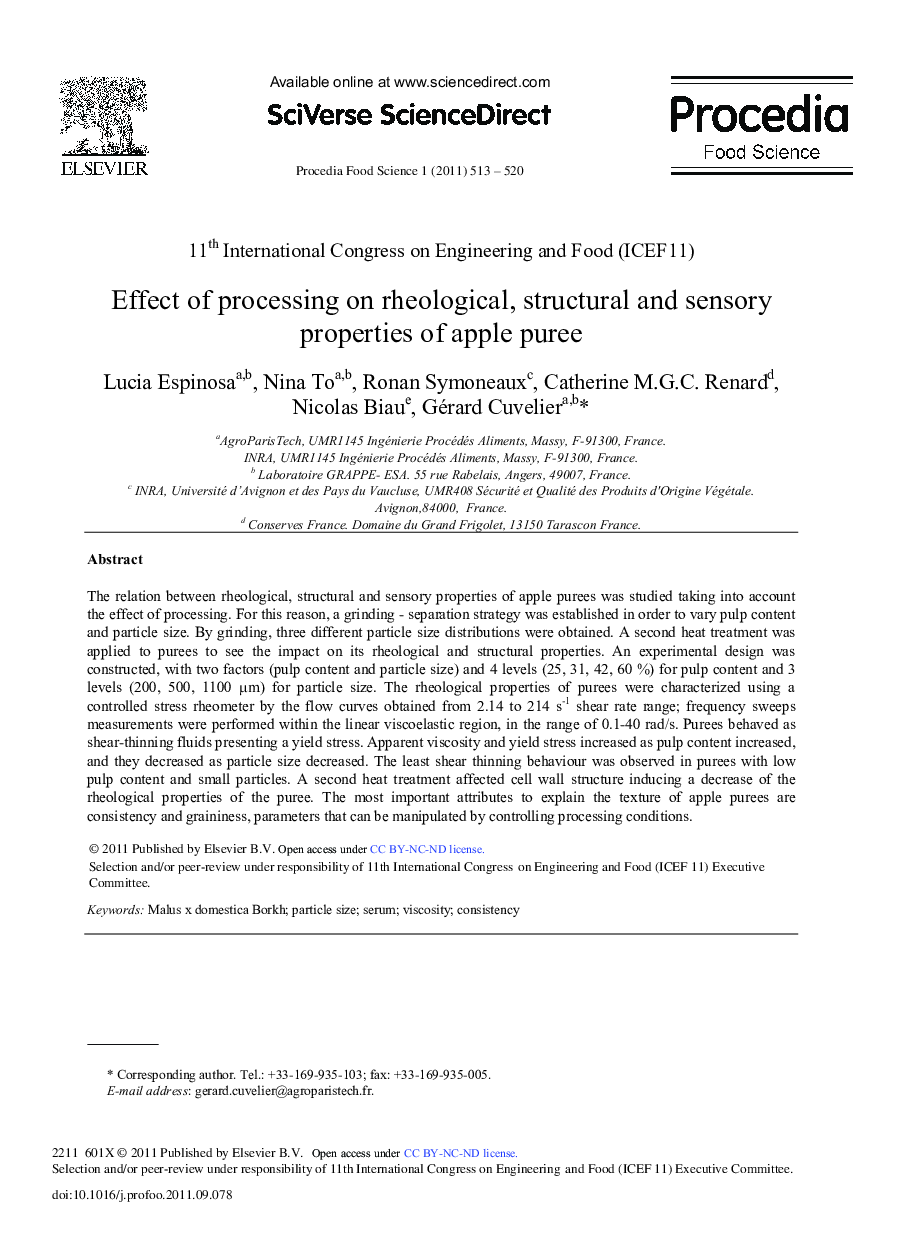| Article ID | Journal | Published Year | Pages | File Type |
|---|---|---|---|---|
| 1264986 | Procedia Food Science | 2011 | 8 Pages |
The relation between rheological, structural and sensory properties of apple purees was studied taking into account the effect of processing. For this reason, a grinding - separation strategy was established in order to vary pulp content and particle size. By grinding, three different particle size distributions were obtained. A second heat treatment was applied to purees to see the impact on its rheological and structural properties. An experimental design was constructed, with two factors (pulp content and particle size) and 4 levels (25, 31, 42, 60%) for pulp content and 3 levels (200, 500, 1100 μm) for particle size. The rheological properties of purees were characterized using a controlled stress rheometer by the flow curves obtained from 2.14 to 214 s−1 shear rate range; frequency sweeps measurements were performed within the linear viscoelastic region, in the range of 0.1-40 rad/s. Purees behaved as shear-thinning fluids presenting a yield stress. Apparent viscosity and yield stress increased as pulp content increased, and they decreased as particle size decreased. The least shear thinning behaviour was observed in purees with low pulp content and small particles. A second heat treatment affected cell wall structure inducing a decrease of the rheological properties of the puree. The most important attributes to explain the texture of apple purees are consistency and graininess, parameters that can be manipulated by controlling processing conditions.
